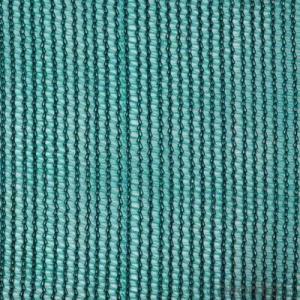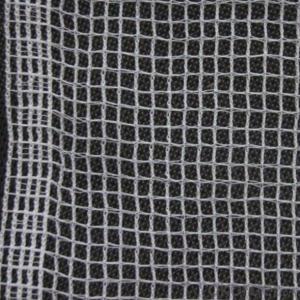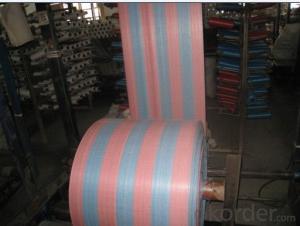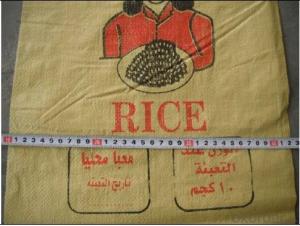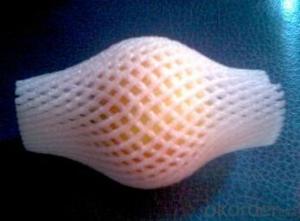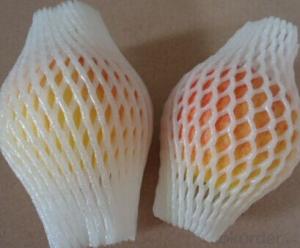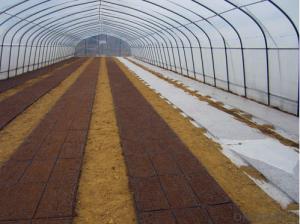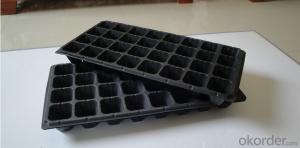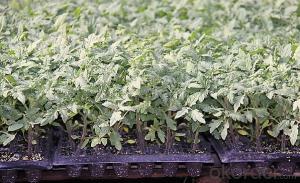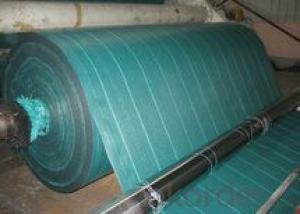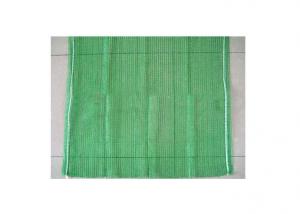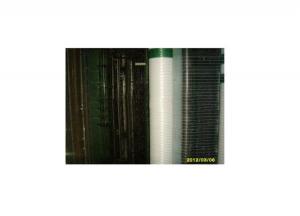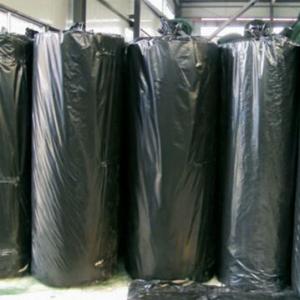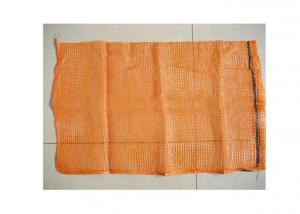Various Specification Construction Safety Net
- Loading Port:
- China Main Port
- Payment Terms:
- TT OR LC
- Min Order Qty:
- -
- Supply Capability:
- -
OKorder Service Pledge
OKorder Financial Service
You Might Also Like
Quick Details
Type: | Shade Sails & Enclosure Nets | Place of Origin: | Shandong China (Mainland) | | |
Shade rate: | 30%-95% | | | | |
Packaging & Delivery
Packaging Detail: | 1.one roll packed with one strong PP bag with one color label 2.one piece packed with one strong PP bag with one color label;several pieces put in a carton |
Delivery Detail: | 15days after the order |
Specifications
Material:HDPE+UV
Color :Black,Green,Red,Yellow,Blue,etc
Length: As your request
Width: 2~6m
Shade rate: 30%~95%,
Specifications : |
|
Description | 100% HDPE Green Sunshade net |
Material | HDPE(High-density polyethylene) |
Net weight | 50-350gsm (as your request) |
Net width | 6'x20'(1.83mx6.1m),Or other size is available (6meters Max.) |
Rolls Lengths | On request(10m,50m,100m,200m etc.) |
Shade rate | 30%-95% |
Colours | Green,Black ,Yellow,gray...... ( as your request) |
Type | Warp knitted |
U.V. | CIBA( 1-5 year) |
Supply capacity | 5tons per month |
Packing | 1.one roll packed with one strong PP bag. 2.one piece packed with one strong PP bag and several pieces put in a carton. 3.one roll packed with one strong PP bag and several one put in a woven bag. |
Terms of Payment | 1.30% T/T in advance,70%T/T after copy B/L. 2.L/C at sight;L/C 30days;L/C 45days. 3.Western union. |
Deliver time | 30-45 days after the order confirmed or the deposit released |
Function of shading net:
Shade net will Blocks sun &heat, Provides 75% More Shades, Lower temperature, Protect against harmful ultraviolet Rays
Used to provide shade against sunlight and control temperature
Shade net-can also be used-for-greenhouses to protect flowers, trees against frost ,and hail damage It can also used for playhouse ,temporary fencing,
shade fabrics give uniform shading and allow crops to retain more moisture. Our shades can help reduce temperature extremes on plants and slow heat loss at night.
Easy to install with optional accessories if necessary.
- Q: I'm doing a debate at school tomorrow, about plastic surgery, and I have to be for it. I've got 3 ok arguments so far. What would you say to defend plastic surgery?
- gives people more confidence makes them feel better about themselves if everyone got surgery then there would be no discrimination against ugly people:)
- Q: Given that my curbside program (or the grocery store) accepts clean, dry, plastic bags for recycling; can i still recycle unmarked bags? Say, bread bags, bagel bags, ziploc bags, bags that come with magazines, etc.
- As long as I know and according to my knowledge on plastic, No plastic bags are not recyclable. We need to think about it. It can not be destroyed and if some animal like cow or donkey will by mistake swallow it, they will die. We need to find an option for plastic bags.
- Q: How do agricultural plastic products help with seedling protection?
- Agricultural plastic products help with seedling protection by providing a physical barrier that shields young plants from external factors such as pests, harsh weather conditions, and weed competition. These products, like plastic mulch films or greenhouse covers, create a controlled environment that enhances seed germination, accelerates growth, and improves overall plant health. Additionally, plastic products can help retain moisture in the soil, regulate temperature, and prevent erosion, all of which contribute to better seedling establishment and higher crop yields.
- Q: This question asks about the methods employed by farmers to handle the waste generated from the production of agricultural plastics.
- <p>Farmers manage waste from agricultural plastic production through various methods. They often recycle plastic materials, such as plastic film and containers, by collecting and sending them to recycling facilities. Some farmers use biodegradable plastics that break down naturally over time, reducing environmental impact. Additionally, waste management practices like proper disposal in designated landfills and the use of composting for certain types of plastic waste are employed. Innovations in technology have led to the development of machinery that can process plastic waste into usable materials or energy. Education and awareness programs also play a role in promoting sustainable waste management practices among farmers.</p>
- Q: Is it possible for farmers to utilize recycled plastic mulch in agriculture?
- <p>Yes, farmers can use recycled agricultural plastic mulch. Recycled plastic mulch is a sustainable alternative that helps reduce waste and environmental impact. It can be used in the same way as traditional plastic mulch, providing weed control, conserving soil moisture, and improving crop growth. However, it's crucial to ensure that the recycled mulch meets quality standards to avoid any negative effects on soil health or crop yield. Farmers should source recycled mulch from reliable suppliers and consider the longevity and decomposition rates of the material when making decisions about its use.</p>
- Q: What are the possible uses for agricultural plastic products after their initial purpose has been fulfilled?
- <p>Yes, there are alternative uses for agricultural plastic products after their primary use. These include recycling to produce new plastic products, repurposing as mulch in gardens, or using them for constructing low-cost greenhouses. Some plastics can be transformed into oil through a process called pyrolysis. Additionally, they can be used as a raw material for manufacturing composite lumber or other construction materials. It's important to note that proper disposal and recycling are crucial to minimize environmental impact.</p>
- Q: How do agricultural plastic products assist in hydroponic ebb and flow system monitoring?
- Agricultural plastic products play a crucial role in hydroponic ebb and flow system monitoring by providing a variety of benefits. Firstly, plastic trays or grow beds are used to hold the nutrient solution and plants, allowing for easy monitoring of water levels and overall system performance. These trays also help in preventing any leaks or spills, ensuring a controlled and efficient hydroponic environment. Additionally, plastic tubing is utilized to transport the nutrient solution and monitor the flow rate, allowing growers to adjust and optimize the system as needed. Plastic covers or films are used to create a greenhouse effect, retaining heat and humidity, which is essential for the growth of plants in hydroponics. Overall, agricultural plastic products serve as essential tools in monitoring and maintaining the ebb and flow system, promoting healthy plant growth and maximizing crop yields.
- Q: How do you prevent algae growth in nursery trays?
- There are several ways to prevent algae growth in nursery trays. One effective method is to ensure proper drainage in the trays, allowing excess water to flow out and reducing the moisture levels that algae thrive in. Additionally, providing adequate air circulation and avoiding overcrowding of plants in the trays can help prevent algae growth. Regularly cleaning the trays and removing any debris or organic matter that can serve as a nutrient source for algae is also important. Finally, avoiding overwatering and using a sterile growing medium can further inhibit algae growth in nursery trays.
- Q: any plastic poker playing cards
- KEM and COPAG make the plastic cards that you are looking for.
- Q: What types of plastic materials are used in making irrigation channels?
- The types of plastic materials commonly used in making irrigation channels include polyvinyl chloride (PVC), high-density polyethylene (HDPE), and polypropylene (PP).
Send your message to us
Various Specification Construction Safety Net
- Loading Port:
- China Main Port
- Payment Terms:
- TT OR LC
- Min Order Qty:
- -
- Supply Capability:
- -
OKorder Service Pledge
OKorder Financial Service
Similar products
Hot products
Hot Searches
Related keywords
